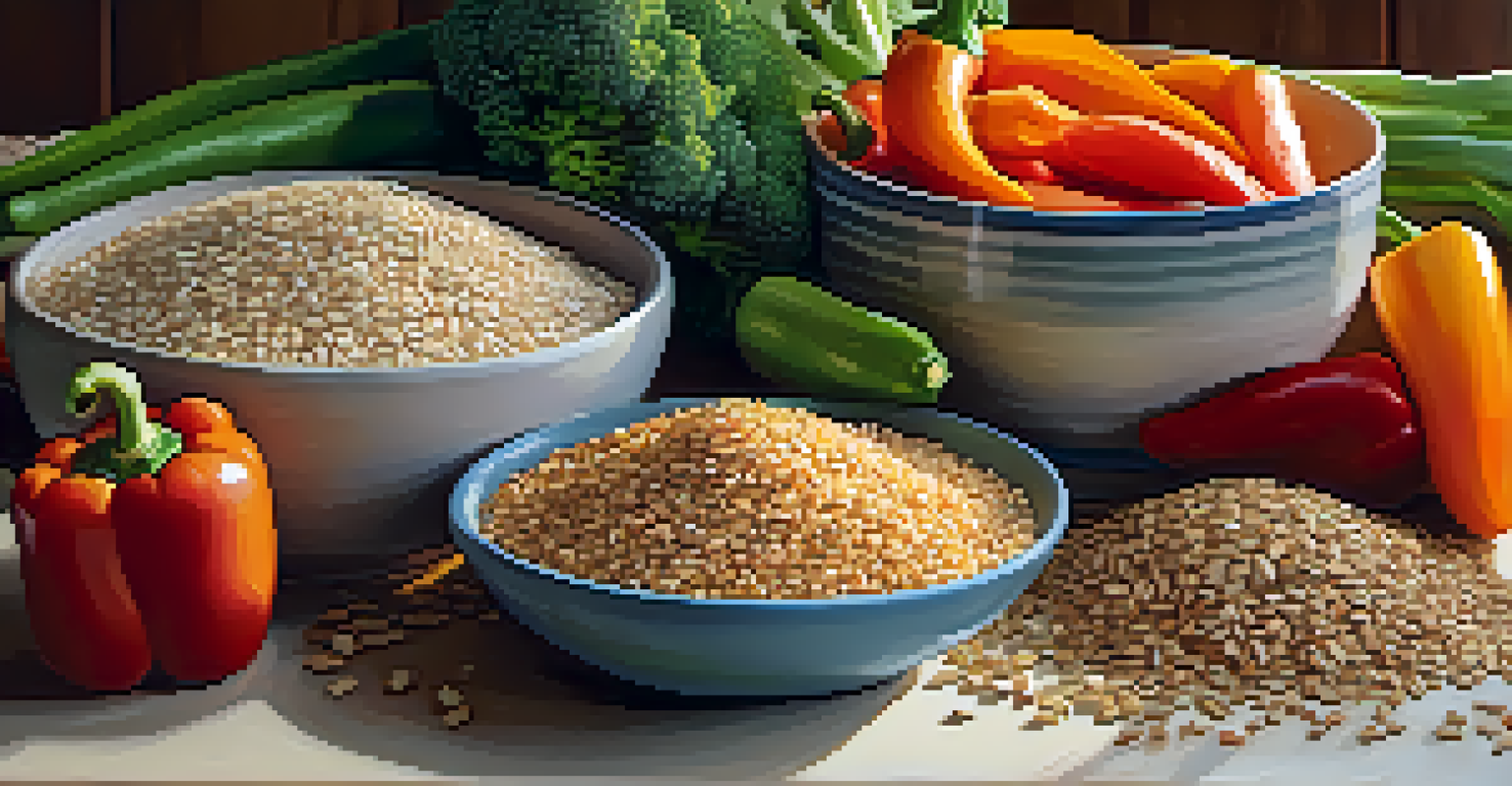How to Choose Nutrient-Dense Foods for Better Health

Understanding Nutrient Density: What Does It Mean?
Nutrient density refers to the amount of essential nutrients in a food relative to its calorie content. Think of it as getting the most 'bang for your buck' in terms of nutrition. Foods that are nutrient-dense are packed with vitamins, minerals, fiber, and antioxidants while being relatively low in calories.
Let food be thy medicine and medicine be thy food.
For instance, a cup of spinach is low in calories but high in vitamins A, C, and K, as well as iron and calcium. In contrast, a sugary snack might offer a lot of calories but very few nutrients. This is why understanding nutrient density is vital for making healthier food choices.
By focusing on nutrient-dense foods, you're not just cutting calories; you're enriching your diet with the essential components your body needs. This can lead to better overall health, increased energy levels, and even weight management.
Identifying Nutrient-Dense Foods: Key Characteristics
When looking for nutrient-dense foods, consider whole, minimally processed options. Fresh fruits and vegetables, whole grains, lean proteins, and healthy fats are excellent choices. For example, quinoa is not only a complete protein but also provides fiber and various vitamins, making it a great addition to your meals.

Another characteristic of nutrient-dense foods is their color. Brightly colored fruits and vegetables often indicate a high level of antioxidants and vitamins. For instance, berries are not only delicious but also loaded with antioxidants that can help reduce inflammation.
Nutrient Density Explained Simply
Nutrient density measures the essential nutrients in foods relative to their calorie content, helping you make healthier food choices.
Moreover, pay attention to the ingredient list. If a food is filled with artificial additives and preservatives, it might be lower in nutrients. Opt for foods that feature whole ingredients to maximize your nutrient intake.
Incorporating Fruits and Vegetables Into Your Diet
Fruits and vegetables are the cornerstones of a nutrient-dense diet. They are rich in vitamins, minerals, and fiber while being low in calories. Aim to fill half your plate with these colorful powerhouses at every meal for optimal health benefits.
You are what you eat, so don’t be fast, cheap, easy, or fake.
For instance, snacking on carrot sticks or apple slices can satisfy your cravings without the added sugars found in many processed snacks. You can also experiment with smoothies, blending various fruits and greens for a nutrient-packed drink that tastes great.
Remember, variety is key! Eating a wide range of fruits and vegetables ensures that you get a broad spectrum of nutrients. Try to choose seasonal produce, which not only offers better flavor but often more nutrients.
The Role of Whole Grains in a Healthy Diet
Whole grains are another essential component of a nutrient-dense diet. Unlike refined grains, whole grains retain the bran, germ, and endosperm, providing more fiber, B vitamins, and minerals. Foods like brown rice, quinoa, and oats are great examples.
Incorporating whole grains can help keep you full longer, supporting weight management and digestion. For instance, swapping white rice for quinoa can elevate your meal's nutritional profile while adding a delightful nutty flavor.
Key Traits of Nutrient-Dense Foods
Look for whole, minimally processed foods like fruits, vegetables, whole grains, and lean proteins to maximize nutrient intake.
Moreover, whole grains can also support heart health and reduce the risk of chronic diseases. Making small changes, like choosing whole grain bread instead of white, can have a significant impact on your overall health.
Choosing Lean Proteins for Optimal Nutrition
Lean proteins are a vital part of a nutrient-dense diet, providing essential amino acids without excessive saturated fat. Options like chicken breast, fish, beans, and legumes are excellent choices that help support muscle health and overall body function.
For example, swapping out fatty cuts of meat for grilled salmon not only reduces calorie intake but also introduces heart-healthy omega-3 fatty acids into your diet. Additionally, plant-based proteins like lentils and chickpeas are brimming with nutrients and can be very filling.
Incorporating a variety of protein sources can also enhance your meals. Try adding beans to salads or using Greek yogurt as a base for dressing to boost nutrition without sacrificing flavor.
Healthy Fats: Why They're Essential for Your Diet
Healthy fats are often misunderstood, but they play a crucial role in a nutrient-dense diet. Incorporating sources of unsaturated fats, such as avocados, nuts, seeds, and olive oil, can improve heart health and promote nutrient absorption.
For instance, adding a handful of nuts to your morning oatmeal not only enhances the flavor but also provides healthy fats that keep you satiated longer. Similarly, using olive oil as a dressing can elevate the nutritional content of your salads.
Practical Tips for Healthier Eating
Plan meals around nutrient-dense foods, read labels carefully, and listen to your body's hunger cues to improve your diet.
It's important to balance fat intake by limiting saturated and trans fats found in fried and processed foods. By choosing healthy fats, you nourish your body and support overall wellness.
Practical Tips for Making Healthier Food Choices
Making healthier food choices doesn't have to be overwhelming. Start by planning your meals and snacks around nutrient-dense foods, which can save time and help you stay on track. Meal prepping on weekends can help you grab healthy options during busy weekdays.
Another tip is to read food labels carefully. Look for products that are high in fiber and low in added sugars and unhealthy fats. This knowledge empowers you to make informed decisions when shopping.

Finally, don't forget to listen to your body. Eating mindfully and paying attention to hunger cues can help you choose foods that satisfy and nourish you while keeping your health goals in check.